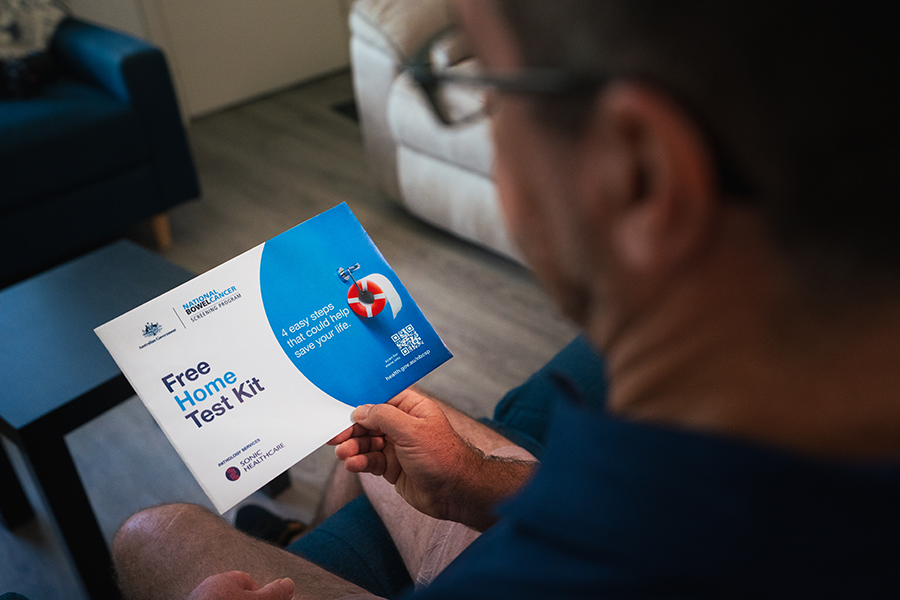Indicator Definitions

LEARN MORE WITH THE
Australian Cancer Atlas 2.0 Technical report
The Australian Cancer Atlas 2.0 reveals how the impact of cancer varies across Australia.
Below, you will find an overview of the methods used to create the Atlas. If you would like more detailed information about the methods, technology, data sources or visualisations, please refer to our Technical Report (e-book).
Types of Indicators
There are six separate types of indicators included in the Australian Cancer Atlas 2.0. Scroll down or click on the tabs above to learn about the different indicators.

Cancer Risk Factors
In Australia, about one in three cancers can be linked to things we can change, like our lifestyle choices. The Australian Cancer Atlas 2.0 focuses on five main groups of factors that can increase cancer risk: smoking, alcohol, diet, weight, and physical activity. These were selected after consulting a wide range of experts and reviewing the scientific literature. The Australian Cancer Atlas 2.0 includes the following risk factors:
Current smokers
Those who reported to be current smokers – including daily, weekly or less than weekly – who had smoked at least 100 cigarettes in their life.
Inadequate diet
Based on self-reported diet, those who did not meet both the fruit and vegetable 2013 NHMRC Australian Dietary guidelines.
Inadequate physical activity (all)
Those who did not meet the 2014 Department of Health Physical Activity guidelines, based on their leisure and workplace physical activity levels.
Inadequate physical activity (leisure only)
Those who did not meet the 2014 Department of Health Physical Activity guidelines, based on their leisure physical activity levels.
Obese
Those with a measured body mass index (BMI) greater or equal to 30.
Overweight or obese
Those with a measured body mass index (BMI) greater or equal to 25.
Risky alcohol consumption
Self-reported, no more than 10 standard drinks a week and no more than 4 standard drinks on any one day.
RISKY WAIST CIRCUMFERENCE
Those with a measured waist circumference measurements of ≥94cm (men) and ≥80cm (women).
How to use the Australian Cancer Atlas 2.0
If you’d like help navigating the Australian Cancer Atlas 2.0, head to our How to Use page for detailed instructions for gathering insights and understanding what they mean.
Cancer Diagnosis
The term “cancer diagnosis” refers to the new cases of cancer identified during a certain time. Just stating the number of diagnoses can be misleading because some areas have higher populations than others. To give a more accurate picture, cancer diagnosis rates are used, that adjust for the population living in each area, along with the age distribution.
When the Australian Cancer Atlas 2.0 talks about cancer diagnosis, it’s referring to those cancers diagnosed among Australians aged 15 and older.


Cancer Survival
The term “cancer survival” refers to how many people diagnosed with cancer are still alive a certain number of years after their diagnosis. In the Australian Cancer Atlas 2.0, survival five years after the initial diagnosis is reported.
In the Australian Cancer Atlas 2.0, survival related to the cancer itself is of particular interest, rather than other causes such as injury or dementia. However, finding the exact cause of death can be complex, especially when someone has multiple health issues at the same time. This makes it hard to calculate “cause-specific survival” because a single cause of death is often unknown.
One way to deal with this is to use “relative survival,” where the overall survival of a group of cancer patients is compared with the overall survival of the general population. This comparison takes into account the age and sex of the people diagnosed with cancer, so any difference in survival between the two groups can be linked to the cancer diagnosis.
If the 5-year relative survival estimate is 100%, it means that, on average, there’s no difference in survival between the cancer patients and the general population over the 5 years following the diagnosis. On the other hand, a 5-year relative survival estimate of 50% indicates that, on average, the group of cancer patients is about half as likely to survive for 5 years than the general population. Survival maps are not provided for certain cancer characteristics or cancer types, because the 5-year relative survival is close to 100%.
Cancer Screening or Testing
The Australian Cancer Atlas 2.0 includes information on breast cancer screening, cervical screening and bowel cancer screening, each of which are formal screening programs within Australia. In addition, prostate specific antigen (PSA) testing is included, which is an ad-hoc method for detecting signs of prostate cancer.
Cancer Characteristics
The following cancer types are included in the Australian Cancer Atlas 2.0.
| Cancer description | ICD-10 code(s) |
|---|---|
| All malignant cancers combined | C00–C97, D45, D46, D47.1, D47.3–D47.5 |
| Bladder cancer | C67 |
| Bowel cancer (Colorectal cancer) | C18-C20 |
| Brain cancer | C71 |
| Breast cancer (Female only) | C50 |
| Breast cancer in situ (Female only) | D05 |
| Cervical cancer | c53 |
| Classic myeloproliferative neoplasms | ICD-O-3 codes: 9950, 9960-9962 |
| Head and neck cancer | C00-C14, C30-C32 |
| Kidney cancer | C64 |
| Leukaemia | C91-C95 |
| Liver cancer | C22 |
| Lung cancer | C33-C34 |
| Melanoma in situ | D03 |
| Melanoma of the skin | C43 |
| Mesothelioma | C45 |
| Myeloma | C90 |
| Neuroendocrine tumours | Histology codes: 8013,8040-8045, 8150-8156, 8158-8240-8249, 8345-8347, 8680-8683, 8690-8693, 8700, 9091 for all topography codes or 8510 for topography C73 |
| Non-Hodgkin Lymphoma | C82-C86 |
| Oesophageal cancer | C15 |
| Ovarian cancer | C56 |
| Pancreatic cancer | C25 |
| Prostate cancer | C61 |
| Rare blood cancers | C81 |
| Rare cancers | All malignant neoplasms with an incidence rate of <6 cases per 100,000 Australians (except basal and squamous carcinomas of skin) |
| Soft tissue sarcomas | RARECAREnet project definition and Cancer data in Australia definition of soft tissue sarcoma (Table 5 and 6 on Cancer data in Australia, Updating sarcoma reporting – Australian Institute of Health and Welfare (aihw.gov.au) |
| Stomach cancer | C16 |
| Testicular cancer | C62 |
| Thyroid cancer | C73 |
| Uterine cancer | C54-C55 |
| Vulva | C51 |
An invasive cancer is a type that has grown, or invaded, into the cell tissue of the organ involved. These are the cancers usually reported by cancer registries in Australia. The Australian Cancer Atlas 2.0 includes over 20 different invasive cancer types (see table below).
On the other hand, in situ cancers are found when they have not yet invaded the cell tissue. In Australia, registries usually only collect and report on in situ cancers for melanoma and breast cancer, both of which are included in the Australian Cancer Atlas 2.0.
The stage at which cancer is diagnosed shows how far it has spread. There are four stages, with stage 1 being localized and stage 4 being more widespread. Generally, the higher the stage, the more severe the cancer and the worse the chances of survival. In Australia, data on the stage at diagnosis for certain cancers are only available for the whole country in 2011. Melanoma, breast cancer, and prostate cancer were the only ones considered complete enough for reporting in the Australian Cancer Atlas.
For melanoma, the thickness of the tumour also indicates how severe it is. The Australian Cancer Atlas 2.0 includes information on thickness for melanomas found between 2010 and 2019, categorized as thin (≤1mm) or thick (>1mm).
The following cancer types are included in the Australian Cancer Atlas 2.0.







